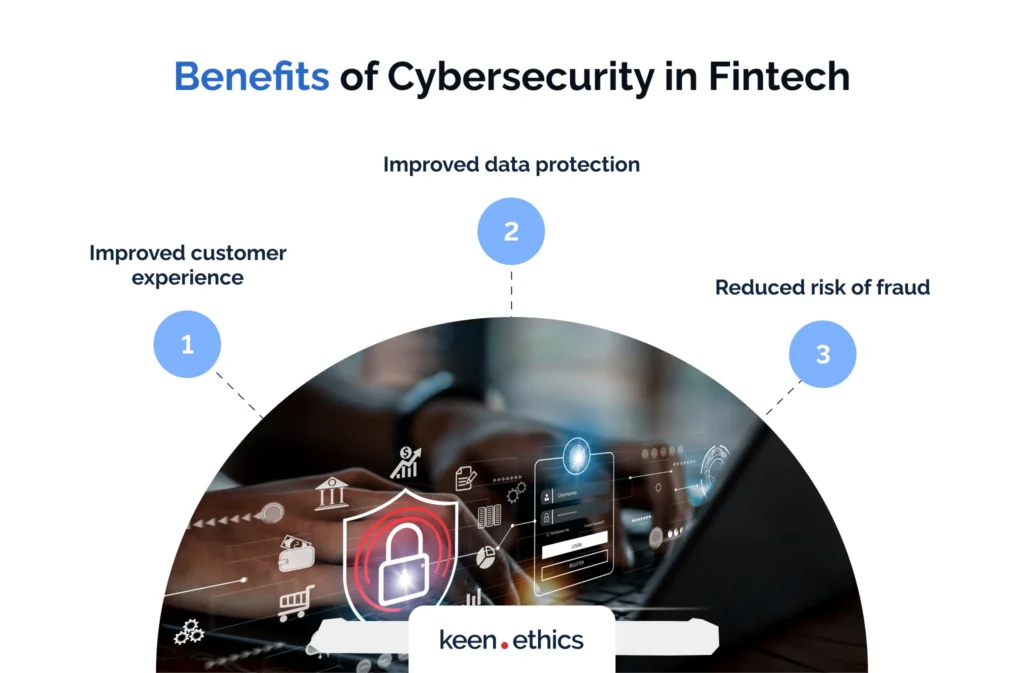Understanding the Cybersecurity Landscape in Fintech

The fintech industry, characterized by its rapid technological advancements and innovative financial services, faces a unique set of cybersecurity challenges. One of the primary concerns is the high volume of financial transactions processed daily. This substantial flow of monetary exchanges makes fintech companies an attractive target for cybercriminals seeking to exploit vulnerabilities for financial gain. Additionally, fintech firms handle sensitive customer data, including personal identification information and banking details, which, if compromised, can lead to significant financial and reputational damage.
Another critical aspect is the integration of various technologies. Fintech companies often employ a mix of legacy systems and cutting-edge solutions, creating a complex IT environment. This complexity can introduce security gaps, making it difficult to monitor and protect against potential threats effectively. The widespread use of APIs (Application Programming Interfaces) to enable seamless interactions between different financial services further amplifies the risk, as these interfaces can be exploited if not adequately secured.
Recent high-profile cyber incidents in the fintech sector highlight the urgency for robust cybersecurity measures. For instance, the breach at Equifax in 2017 exposed the personal information of over 147 million people, underscoring the catastrophic impact of such incidents. Similarly, the 2020 cyberattack on Robinhood, a popular trading platform, resulted in unauthorized access to user accounts, thereby compromising sensitive financial data. These incidents serve as stark reminders of the persistent and evolving threats faced by fintech companies.
In light of these challenges, it is imperative for fintech firms to adopt comprehensive cybersecurity strategies. This includes regular security assessments, the implementation of advanced encryption methods, and continuous monitoring for suspicious activities. By understanding the unique cybersecurity landscape and proactively addressing potential vulnerabilities, fintech companies can better protect their assets and maintain the trust of their customers.
Implementing Strong Authentication and Access Controls
In the rapidly evolving fintech landscape, safeguarding sensitive information and critical systems is paramount. Implementing robust authentication mechanisms and stringent access controls forms the backbone of cybersecurity strategies in fintech companies. One of the most effective methods to enhance security is Multi-Factor Authentication (MFA). By requiring multiple forms of verification, MFA significantly reduces the likelihood of unauthorized access, even if one authentication factor is compromised.
Role-Based Access Control (RBAC) is another essential practice. RBAC ensures that users can only access the information and systems necessary for their specific roles. This method not only simplifies the management of permissions but also minimizes the risk of internal threats by restricting unnecessary access. Complementing RBAC is the principle of least privilege, which dictates that users should be granted the minimum level of access required to perform their functions. This principle limits the potential damage from compromised accounts or insider threats.
Securing APIs and third-party integrations is equally crucial in fintech applications. APIs serve as gateways to data and services, making them prime targets for attackers. Implementing stringent authentication and authorization protocols for APIs can prevent unauthorized access. Moreover, continuously monitoring and auditing API interactions can help detect and mitigate potential security breaches in real-time. When integrating with third-party services, it is vital to ensure that these services adhere to robust security standards and practices. Conducting regular security assessments and audits of third-party integrations can further bolster the overall security posture.
By adopting these best practices—MFA, RBAC, the principle of least privilege, and securing APIs and third-party integrations—fintech companies can significantly enhance their cybersecurity defenses, ensuring that sensitive information and critical systems remain protected against emerging threats.
Data Encryption and Secure Data Storage
In the rapidly evolving landscape of financial technology (fintech), data encryption stands as a cornerstone for safeguarding sensitive information. Encryption transforms readable data into an unreadable format, ensuring that unauthorized parties cannot access it. There are two primary encryption methods: symmetric and asymmetric encryption. Symmetric encryption uses a single key for both encryption and decryption, making it faster but requiring secure key management. In contrast, asymmetric encryption employs two keys – a public key for encryption and a private key for decryption – providing enhanced security at the cost of computational efficiency.
Effective data encryption extends beyond the mere transformation of data. Fintech companies must implement encryption at rest, securing stored data, and encryption in transit, protecting data as it moves across networks. This dual-layered approach ensures that data remains secure whether it is stored in databases or being transferred between servers and clients. Additionally, secure cloud storage solutions have become indispensable for fintech firms. These solutions provide robust encryption as part of their service offerings, enabling companies to leverage scalable and flexible storage while maintaining stringent security standards.
Adherence to data protection regulations such as the General Data Protection Regulation (GDPR) and the California Consumer Privacy Act (CCPA) is imperative for fintech companies. These regulations mandate strict guidelines for data encryption and secure storage practices. Compliance not only helps in avoiding hefty fines but also fosters trust among clients, who are increasingly concerned about data privacy. Implementing encryption and secure storage solutions in line with these regulations ensures that fintech companies remain compliant while protecting their clients’ financial and personal data.
Ultimately, the integration of robust data encryption and secure storage practices is crucial for fintech companies. By leveraging advanced encryption methods, ensuring data security at rest and in transit, and adhering to regulatory requirements, these companies can significantly mitigate risks and uphold the trust of their clientele.
Continuous Monitoring and Incident Response Planning
Continuous monitoring is a cornerstone of effective cybersecurity strategies for fintech companies. Given the sensitivity and value of financial data, detecting and responding to cybersecurity threats in real-time is crucial. Implementing a Security Operations Center (SOC) is one of the best practices to achieve this objective. A SOC acts as the central hub for monitoring, detecting, and analyzing security events, providing a comprehensive view of the organization’s cybersecurity posture.
In conjunction with a SOC, utilizing Security Information and Event Management (SIEM) systems is essential. SIEM systems aggregate and analyze data from various sources, enabling the identification of anomalous activities that may indicate a security threat. By correlating data from different systems, SIEM provides actionable insights and helps streamline incident response processes.
Furthermore, integrating threat intelligence into cybersecurity practices enhances the ability to anticipate and mitigate potential threats. Threat intelligence involves collecting and analyzing information about current and emerging threats, providing a proactive approach to cybersecurity. This intelligence can be derived from various sources, including open-source information, commercial threat feeds, and industry-specific threat-sharing communities.
Developing a comprehensive incident response plan is equally important. This plan should outline specific steps for preparing, detecting, containing, eradicating, and recovering from cyber incidents. Preparation involves establishing roles and responsibilities, ensuring communication channels are in place, and conducting regular training and simulations. Detection focuses on identifying the signs of a security breach swiftly, while containment aims to limit the impact of the incident. Eradication involves removing the threat, and recovery ensures systems return to normal operation with minimal downtime.
Regular security audits and penetration testing are vital components of continuous monitoring. Security audits assess the effectiveness of current security measures and identify areas for improvement. Penetration testing, or ethical hacking, evaluates the resilience of systems against potential attacks, providing insights into vulnerabilities that need to be addressed.
By adhering to these best practices, fintech companies can enhance their cybersecurity posture, ensuring the protection of sensitive financial data and maintaining trust with their clients.

